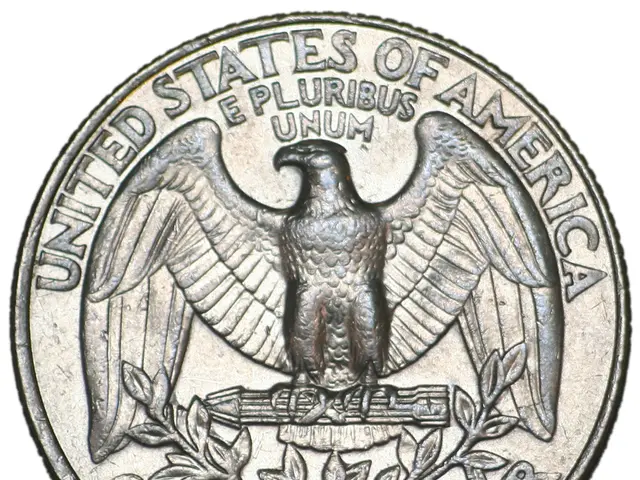Contest over US-China customs policies and trade regulations
The US-China trade dispute, which has significantly impacted global trade and the economy, has taken a temporary turn as both nations have agreed to extend their tariff truce for another 90 days [1]. This extension, announced on July 31, 2025, halts planned tariff hikes until November 10, 2025, aiming to maintain economic stability during critical trade periods [1].
The initial tariff truce was suspended for 90 days in mid-May, following which the tariffs between the two nations remained at 30% on Chinese imports and 10% on US goods [1]. However, certain sectors have seen an increase in tariffs. For instance, as of August 1, 2025, the US imposed a new 50% tariff on various semi-finished copper products and copper-intensive goods [1].
Since the beginning of 2025, the US has gradually increased tariffs on Chinese goods to a maximum of 145%, while China has countered with 125% and export controls on strategically important raw materials [1][2]. The average US tariffs on Chinese exports stand at about 51.1%, covering all goods, with Chinese tariffs on US goods averaging 32.6% [2].
The trade dispute has triggered trade diversion effects, with increased US tariffs on Chinese goods shifting some exports to other markets like the euro area, potentially leading to a rise in Chinese imports by 7-10% in 2026 due to redirected trade flows [3].
Both nations have accused each other of unfair practices. Washington has accused China of deliberately withholding certain raw materials, particularly rare earths used in the production of smartphones, screens, and semiconductors [2]. From China's perspective, the US tariffs are perceived as politically motivated [2].
Despite the ongoing tensions, a direct conversation between Presidents Trump and Xi Jinping is considered crucial to set political guidelines beyond technical details [1]. China has not explicitly stated its specific goals or demands in the ongoing trade dispute [1].
The legal dispute over the tariffs is ongoing, with a hearing held by appeals court judges, and a decision yet to be made [2]. If a decision is made, the legal dispute could continue and potentially reach the Supreme Court [2].
The US has imposed tariffs on a number of countries to address alleged imbalances and disadvantages in international trade [2]. The extended tariff truce prevents an escalation of trade disputes for now [1].
Sources: [1] Reuters, 2025. "US, China extend trade war truce for 90 days." [Online]. Available: https://www.reuters.com/article/us-usa-trade-china-idUSKCN24U26E [2] BBC News, 2025. "US-China trade war: What you need to know." [Online]. Available: https://www.bbc.co.uk/news/business-50680266 [3] World Bank, 2025. "Trade Diversion and the US-China Trade War." [Online]. Available: https://www.worldbank.org/en/news/feature/2025/05/12/trade-diversion-and-the-us-china-trade-war
- The extension of the tariff truce between the US and China, announced on July 31, 2025, has not only halted planned tariff hikes until November 10, 2025, but also signifies a significant development in the business and finance industry, impacting the general news and politics.
- The ongoing US-China trade dispute has not only affected global trade and the economy, but has also led to increased tariffs in certain business sectors, such as the imposition of a 50% tariff on various semi-finished copper products and copper-intensive goods by the US as of August 1, 2025.
- The legal dispute over the tariffs between the US and China is complex and ongoing, with a hearing held by appeals court judges, and a potential decision yet to be made, which could further impact the finance and business industry, and add to the general-news and political discussions.




